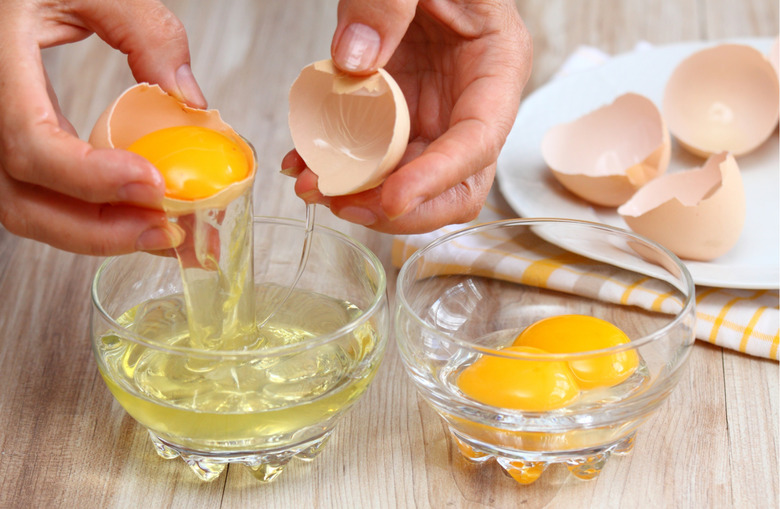How To Separate Eggs
Many savory brunch recipes and dessert recipes call for separating an egg's yolk from its whites, whether you're making a hollandaise sauce or an egg-white omelet. When separating an egg, it's important to do so carefully so that there are no bits of yolk left in the egg whites.
Cooking Tips We Learned From Our Parents
Using an egg that's fresh from the fridge is best, as the yolk is firmer when it's cold. One of the most common ways of separating an egg is by using its built-in separator — the shell. Crack the egg over a bowl so that the shell comes apart in two halves, keeping the yolk contained in one half. Allow the egg whites to drip out of the shell and into a bowl, carefully transferring the yolk back and forth between the two shell halves to encourage as much of the egg white to fall into the bowl as you can. Once you're done, you can transfer the egg yolk to a second bowl.
Since this method does risk the yolk being broken by the sharp edges of the eggshells, another preferred method is to separate by hand. After cracking the egg in half and allowing the egg whites to drip out into the bowl, transfer the yolk and the rest of the egg whites from one eggshell half to your hand. Holding the yolk in your hand, separate your fingers slightly so as to allow as much egg white to drip out as possible before putting the yolk in the second bowl.
There are egg separators on the market that you can purchase if you find these methods to take up too much time or be too messy. They can come in fun shapes, as slotted spoons or in the form of more complex separators that allow you to measure and store egg whites. Success with these separators can vary, however, and many cooks find them lacking or time-consuming to wash by hand. Whichever method you use, knowing how to separate your eggs is crucial to learning how to make egg recipes that will help you finish up your carton.
